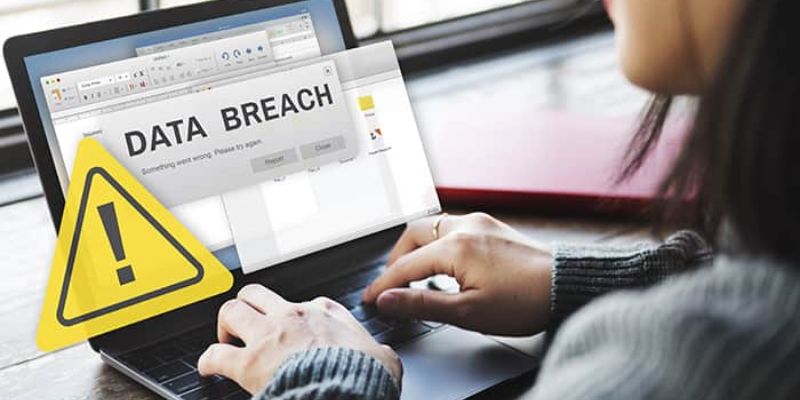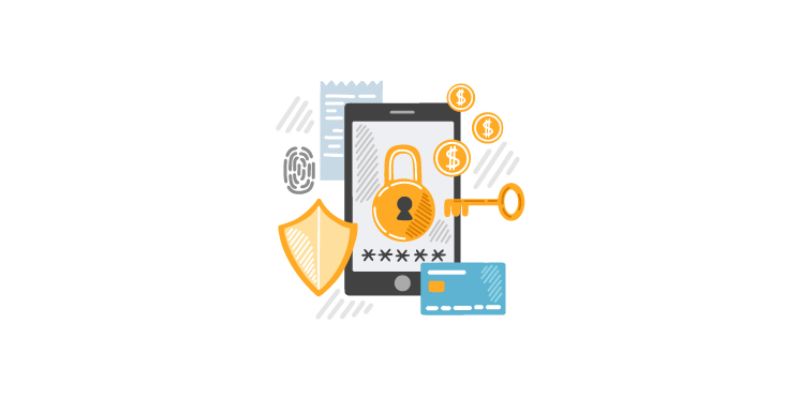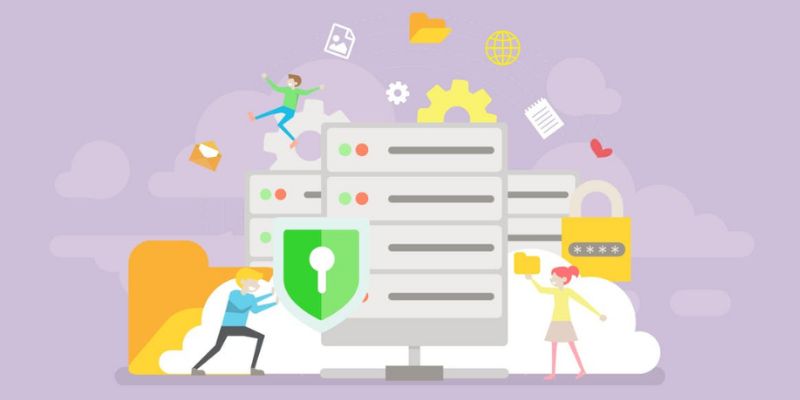**Discovering that your data is compromised can feel like a punch to the gut. If you’ve landed here, chances are you’re grappling with what to do if your data is breached in a digital payment platform. Breathe—it’s not the end of the world, but swift action is crucial. I’ve been there, and I can guide you through the right steps to take back control. Whether it’s identifying shifty transactions or contacting your bank, the path to securing your data requires both calm and decisive moves. Stick with me, and let’s buffer your digital life against unwanted intruders. Read on and step into safe mode!
Immediate Response to a Digital Payment Breach
Identifying Signs of a Digital Payment Platform Compromise
Did your digital payment app send an odd alert? Maybe you saw a purchase you did not make? These signs hint at a data breach. The first step is to check recent transactions. If you spot any that look wrong, your data may be at risk.
Contacting Your Bank to Secure Accounts and Report Fraudulent Activities
Call your bank right away if you think someone hacked your payment app. Tell them what happened and ask them to watch your account for strange actions. They can put blocks on your funds to keep them safe. Make sure to change your passwords for all online accounts. Use strong, unique passwords each time to keep hackers out.
While on the phone, ask about the next steps. Keep a record of whom you talked to and what they said. This info helps with future steps and while monitoring your credit. To keep safe after a hack, check your credit often. This helps you act fast if your score dips because of fraud.
You also have the legal right to know about any data breach. The company should tell you what happened and guide you on securing your info. Be sure to follow their advice to keep your data safe.
Remember, reacting fast can protect your money and personal info. Always keep an eye on your accounts, and never share sensitive details online. With quick thinking and smart moves, you can bounce back from a digital payment breach.

Assessing and Mitigating the Damage
Changing Passwords and Implementing Two-Factor Authentication
When your data faces a breach, it’s key to act fast. Start by changing your passwords. Make them unique and tough to guess. Use different ones for each account. After that, step up your game with two-factor authentication (2FA). This adds an extra check to make sure it’s really you. If your app offers it, say yes right away. It’s a strong move to keep bad folks out.
Many apps will let you do this in their settings. They might send you a code to your phone when you log in. You must use this code plus your password to get in. This way, you block hackers even if they steal your password. It’s like having a double-lock on your data door.
Monitoring Your Credit for Suspicious Changes
Next, keep an eye on your credit. Look for weird activities. This means watching out for any new accounts or charges you don’t know. If you see anything odd, report it fast. The sooner you catch something, the better. You can use free credit reporting sites to track your credit without paying.
You should also tell your bank about the hack. They can watch your accounts for signs of trouble. They’re on your side and will work to keep your money safe.
If you spot a fraud, they help you fix things. They can return money taken from you in some cases. Always check your statements, so you know what’s going on with your cash.
Remember, a quick response can stop a small problem from getting huge. If your data gets hit, don’t wait. Change passwords and use 2FA. Monitor your credit to catch fishy stuff. Talk to your bank to keep your accounts shielded. Doing these steps helps patch up your digital safety net!
While there’s no magic shield against all dangers, taking these steps seriously boosts your defense against digital theft and keeps you a step ahead of the crooks. Don’t let a breach knock you down; lock down your data and stand tall, ready to take on whatever comes your way.

Legal and Consumer Rights
Understanding Data Breach Notifications and Legal Recourse
When your data gets stolen, know your rights. Laws need companies to tell you about data breaches. After a payment app breach, a company should inform you fast. This is a data breach notification. It means unauthorized persons may have accessed your info. If notified, act quick to protect yourself. The law helps you here by making sure companies have to share breach details promptly.
Knowing about the breach lets you respond right away. Immediate actions include checking your account, looking for strange charges, and changing passwords. You have the legal right to this info and the company’s response plan.
Laws vary, but often you can get free credit checks after a hack. Some places let you sue if the breach causes you harm. If this happens to you, collect all the breach info. It helps to prove your case.
Setting Up Fraud Alerts and Understanding Identity Theft Risks
A fraud alert warns credit agencies that you might be a victim. Place a fraud alert by calling one credit bureau. They must tell the others. A fraud alert makes it harder for thieves to open more accounts in your name. It lasts a year and is free to set up.
Identity theft is a big risk with data breaches. Thieves might use your info to pretend to be you. They can open new accounts, get credit cards, or take loans. So, secure bank accounts after a breach and watch out for signs of identity theft. These include bills for things you never bought or calls about unknown debts.
Responding to a digital wallet hack or any data breach means changing passwords right away. Use strong, unique passwords for every account. Two-factor authentication (2FA) also adds extra security. It’s something you know, like a password, plus something you have, like a phone. This makes it harder for hackers to get in.
When dealing with fraud, time is important. If you find weird charges, call your bank fast. They can stop the transaction and secure your account. Reporting the cybercrime incident also matters. It helps authorities track down the bad guys and stop them from doing it again. Plus, it might just help you get your money back.
In all cases, remember to keep a close eye on all your accounts. Monitoring credit post-digital payment hack is crucial. It can prevent more damage. Look for any signs of unauthorized access or loans you didn’t take out.
In a digital payment platform data compromise, knowing your rights and taking quick steps are key. Understand the breach notifications and any legal recourse available to you. Be proactive in preventing identity theft by setting up fraud alerts. These steps will help you stand strong against the challenges of a data breach. Remember, in cyberspace, being alert and educated is your best defense.

Preventative Measures for Future Security
Enhancing Digital Payment Security Protocols
What do you do to stop the same hack from happening again? Secure your accounts now. Change your passwords first. Choose ones that are strong. What does a strong password look like? Think hard to guess, with a mix of letters, numbers, and symbols.
Next up, add two-step checks to log in, like two-factor authentication. This step sends a code to your phone or email when you log in. Only you get this code, so it’s safer. Use this for your bank and any apps that hold your money. It’s like having two locks on your door.
Also, check your bank and app settings. Turn on alerts for when money moves in or out. This way, you know fast if something’s wrong. We call this ‘fraudulent transactions detection.’ It’s your watch guard against theft.
Do you need help setting this up? Contact your bank for help. Banks know about ‘contacting banks post-breach’ and will help you fast. It’s their job to keep your money safe.
Lastly, keep your apps and devices up to date. Updates often have fixes to block hacks. Old apps and systems can leave you open to attacks. Think of updates as fixing holes in your house before thieves can get through.
Consumer Education on Safe Online Transaction Practices
How can you shop online without fear of another breach? Learn some tricks to keep your money safe. Before you buy, make sure the site is real and secure. How? Look for a lock icon near the website address. This lock means the site protects your data.
Don’t click on odd links in emails or texts. Scammers use these to trick you into giving away your info. Instead, go to the website yourself by typing the address.
What more can you do? Share what you know. Tell your friends and family about these tips. If someone sends you money by mistake, let them know. They might have fallen for a scam.
Remember, after a breach, you’re smarter about your safety. Use what you learned to keep safe online. Help others do the same. We can all be safer with a little know-how and care.
To wrap up, remember these points for safety. Change passwords, use two-factor authentication, set alerts for money moves, keep apps updated, and shop on secure sites. You can shake off a breach and come back even stronger. Stay alert and keep your money safe.
In this post, we walked through what you need to do if your digital payment account gets hacked. We looked at spotting the warning signs first. Then, we talked about calling your bank fast to lock down your accounts and stop bad charges.
Next, we moved on to lessening the harm. You learned to change your passwords and turn on extra security checks, like two-factor authentication. It’s also smart to keep an eye on your credit report to catch any weird stuff.
We also covered your rights. You need to know when companies must tell you about data breaches. Plus, it’s key to set up fraud alerts and learn about risks related to stolen identity.
Lastly, I shared how to avoid trouble in the future. Beefing up your payment security and knowing the best ways to pay online safely are big deals.
Remember, staying safe with digital payments means being alert, acting fast when something’s wrong, and always using smart online habits. Keep these tips in mind, and you’ll be a pro at keeping your money safe!
Q&A :
What steps should I take if I suspect my data has been compromised on a digital payment platform?
If you believe your data has been breached on a digital payment platform, act immediately. Begin by changing your passwords and enable two-factor authentication for an additional layer of security. Review your recent transactions for any unauthorized activity and alert your bank or credit card issuer if you detect any fraudulent charges. It’s important to contact the digital payment platform’s support team to inform them of the breach and follow their guidance on the next steps. Monitor your bank statements regularly and consider using credit monitoring services to keep an eye on your credit report for any signs of identity theft.
How can I protect my personal information on digital payment platforms?
To safeguard your personal information on digital payment platforms, always use strong, unique passwords and change them periodically. Be wary of phishing attempts and never share sensitive information via email or messages. Ensure that your device’s operating system, antivirus software, and the payment app itself are up-to-date with the latest security patches. Only use secure networks when making transactions, preferably a private Wi-Fi or your mobile data, and avoid public Wi-Fi networks. Regularly check your accounts for any discrepancies and enable notifications for transaction alerts.
Is it safe to continue using a digital payment platform after a data breach?
After a data breach, it may be safe to continue using a digital payment platform if the company has taken steps to secure their systems and has communicated clearly what measures they have implemented. It’s crucial to evaluate the platform’s response to the breach, such as the transparency of their communication and the effectiveness of their remedies. If they have addressed vulnerabilities and improved their security protocols, it may be safe to resume use with caution. However, you should remain vigilant by monitoring your accounts and using best practices for digital security.
Who should I notify if my data is breached on a digital payment service?
If you experience a data breach on a digital payment service, immediately notify the payment platform’s customer service to report the incident. Contact your bank and credit card issuers linked to the account to inform them of potential fraud and to discuss security measures, such as replacing your credit or debit cards. You should also report the breach to the relevant authorities, such as the Federal Trade Commission (FTC) in the United States, or the Information Commissioner’s Office (ICO) in the UK, and follow their guidance on further steps to protect your identity.
Can a data breach on a digital payment platform affect my credit score?
A data breach on a digital payment platform can potentially affect your credit score if it leads to identity theft and the unauthorized opening of accounts in your name or fraudulent transactions. Breaches can expose your personal information, allowing cybercriminals to commit financial fraud that can harm your credit. To prevent damage to your credit score, monitor your accounts and credit reports regularly, and immediately report any suspicious activity to your bank, credit card issuer, and the credit bureaus. Consider placing a fraud alert or credit freeze on your credit file for added protection.

